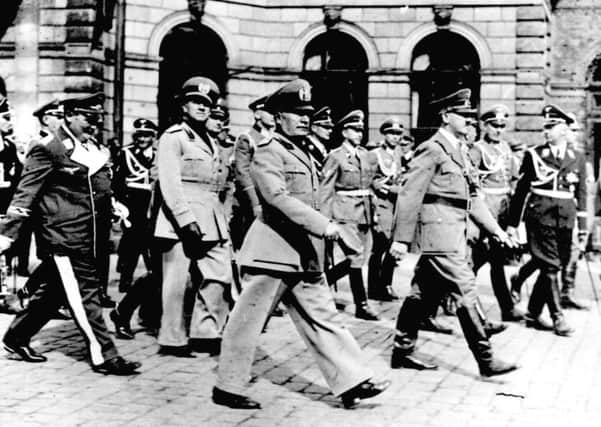Queen’s University research finds Nazi’s ‘climbed higher up social ladder than non-members during Third Reich,’


Those joining were already upwardly mobile individuals, rather than acquiring higher-status positions as a direct reward of becoming members, the study showed.
Academics examined data on about 10,000 German soldiers from the 1930s and 1940s, which contains detailed information on social background such as occupation and education, as well as other characteristics like religion, criminal record and military service.
Advertisement
Hide AdAdvertisement
Hide AdThe research was conducted by Dr Alan de Bromhead, senior lecturer in economics at Queen’s Management School, and Dr Matthias Blum from the German Medical Association in Berlin, formerly of Queen’s Management School.
Dr de Bromhead said: “The research indicates that certain types of people were more likely to become members of Nazi organisations than others.
“It reminds us that we need to think beyond pure ideology when it comes to motivations for joining extremist groups and look at economic and social factors too.”
The data also identified membership of different Nazi organisations such as the NSDAP, SA, SS and Hitler Youth.
Key findings include:
Advertisement
Hide AdAdvertisement
Hide Ad- Members of Nazi organisations were more likely to come from high-status backgrounds and had higher levels of education
- People from a higher-status background were almost twice as likely to join Nazi organisations than someone from a lower-status background
- Catholics were less likely to join Nazi organisations
Dr Blum said: “It is impossible to uncover exactly what motivated people to join the Nazis, but our findings suggest that many educated and ambitious individuals from the higher end of the social scale were attracted to the movement.
“Interestingly this seems to be the case not just for those who joined after the Nazi party came to power in 1933, but also to members who joined when the party was on the fringes of the Weimar political system in the 1920s.
Advertisement
Hide AdAdvertisement
Hide Ad“The study not only helps us to understand how the Nazi party emerged and came to power in the years before World War Two but also gives us an insight into how extremist organisations form and attract members more generally.”